We've said it elsewhere, but it bears repeating: the foundation of a good education is the ability to read well. This isn't just reading for content, though that's certainly part of it; reading well entails the ability to read for information, analyze that information, and connect it with other knowledge and texts to form original ideas. This doesn't just come, it requires lots of practice and plenty of guidance, but the rewards are tangible.
Young students aren't ready for the more advanced levels of reading right off. They need to have time to master the basics, like identifying the plot in a story, understanding characters' emotions, remembering details, and even simply retaining facts. The only way to help them toward this goal is to have them read, and then quiz and test them on what they read.
The Charlotte Mason approach to education is really built on this principle. At first, students simply copy texts word-for-word, then they take dictation, then they learn to compose their own essays, at each stage proving they've retained the original material by answering questions about it. While there aren't a lot of "Charlotte Mason reading programs" out there, many of the ones we carry follow generally this same process, though without the copywork and dictation.
Here is a quick summary of the Reading curricula we offer, in alphabetical order:
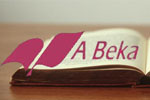 |
A Beka Reading Grades K-6
A Beka Reading includes readers and teacher guides/answer keys. Timed Read & Think worksheets are also available: students read a short text and answer comprehension questions against a stopwatch. Like the CLP series, these are very focused on Christian virtue and morality.
|
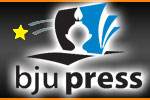 |
BJU Reading Grades K-8
BJU Reading uses textbooks rather than readers, along with workbooks, flipcharts, etc. The teacher's guides act as answer keys, with plenty of information for presenting concepts and relating stories to real life. These books are a bridge from the phonics curriculum to BJU Literature.
|
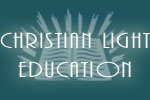 |
CLE Reading to Learn Series Grades K-8
Most reading courses are straightforward, with a basic "read, reflect, respond" pattern. The CLE Reading to Learn Series is an exception. Less thorough but just as good as comparable programs, the CLE readers are fairly lengthy and include full-color illustrations, with character-building stories.
|
 |
CLP Readers Grades K-8
The CLP Readers aren't a unified reading course. Rather, they're a number of independent readers, all designed to encourage reading practice and comprehension while promoting Christian virtue. The Nature Readers are a customer favorite, though all of them have strengths and weaknesses.
|
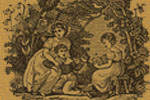 |
McGuffey's Readers Grades K-12
You can't really go wrong with McGuffey's Readers & Workbooks. The readers are standards of character-building, instructive material. Sections are short and illustrated, and the workbooks (a newer addition) include two-page lessons with comprehension questions.
|
 |
Pathway Readers Grades K-8
The ever-popular Pathway Readers series offers solidly Christian virtue-centered readers with slim workbooks to teach comprehension. Pathway Readers are easy to get through, but somewhat bland with sparse black and white illustration and repetitive exercises.
|
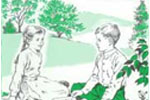 |
Rod & Staff Phonics & Reading Grades K-9
Rod & Staff Phonics & Reading is similar to the Pathway Readers, but more thorough. Each level consists of a number of readers and workbooks, along with a teacher's guide. Stories are character- and Bible-based, illustrations are black and white, and the course is largely student-directed.
|
A lot of folks simply have their kids read books and then discuss what they've read afterwards. This is a fine approach, one which we actually encourage in later grades, but these reading programs are designed for younger students and probably better suited to elementary kids, in a lot of instances at least. Some kids don't need the structure; others do.
Remember that the point isn't for them to get a good grade or even pass a standardized test. The goal of reading instruction is to form young people who can think and connect knowledge received from disparate sources. These programs are just one step in that process, albeit a very important one that cannot be skipped. Peruse our reviews to find the one that best fits your needs and those of your students.
Review by C. Hollis Crossman
C. Hollis Crossman used to be a child. Now he's a husband and father who loves church, good food, and weird stuff. He might be a mythical creature, but he's definitely not a centaur. Read more of his reviews
here.
Did you find this review helpful?